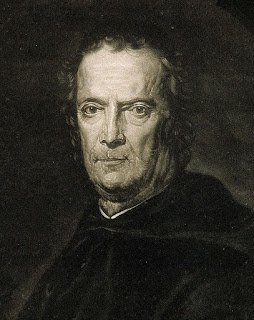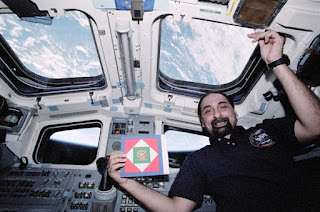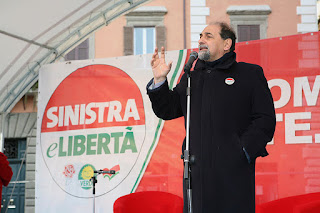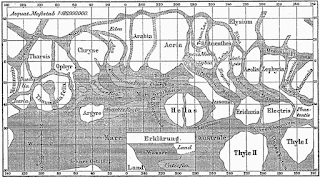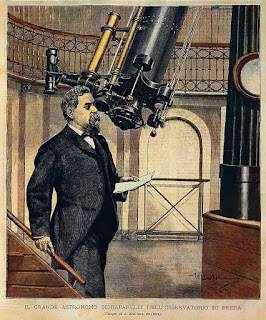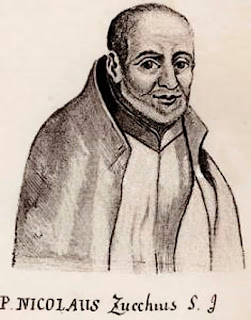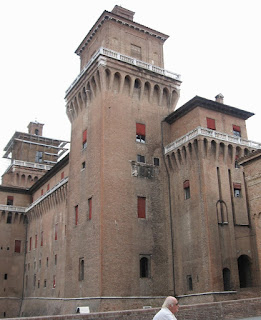Female ‘assistant’ remembered for her important discoveries
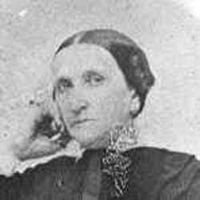 |
| Caterina Scarpellini moved to work at Campidoglio Observatory aged 18 |
Caterina had moved from her native Foligno in Umbria to Rome at the age of 18 to work as an assistant to her uncle, Abbe Feliciano Scarpellini, who was the director of the Roman Campidoglio Observatory. He had been appointed in 1816 by Pope Pius VI to a new chair of sacred physics in the Roman College of the Campidoglio, marking a turning point in the attitude of the Roman Catholic Church to science.
From 1847 onwards, Caterina edited Corrispondenza Scientifica in Rome, a bulletin publishing scientific discoveries. She carried out her observations six times a day and reported on her findings.
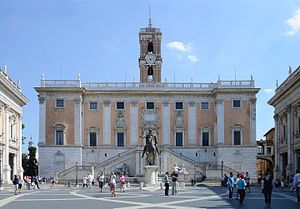 |
| The observatory was part of the Palazzo Senatorio on Piazza del Campidoglio in the centre of Rome |
Caterina published reports of her astronomical observations and meteorological measurements in Italian, French and Belgian journals and also wrote about electrical, magnetic and geological phenomena.
Along with another scientist, she reported on a chemical analysis of sand that had fallen in Rome over three nights in February 1864, which she discovered had blown there from the Sahara desert during a storm.
She compiled the first Italian meteor catalogue and was the only observer in Rome of the 1866 Leonid meteor shower.
 |
| Caterina Scarpellini, here depicted in a magazine illustration, made many important scientific findings |
She became a member of the Accademia dei Georgofili in Florence, an historic institution promoting scientific and agricultural research.
Her writings on the influence of the moon on earthquakes brought her honours from the Moscow Imperial Society of Naturalists and the Viennese Royal Geological Institute.
After Caterina’s death at the age of 65 following a stroke, a statue of her was erected in the Campo Verano cemetery in Rome. A crater on the planet Venus has been named after her.
| The Palazzo Orfini in Foligno, where a printing shop opened in 1470, printing Dante's Divine Comedy |
Foligno, where Caterina Scarpellini was born in 1808, is an ancient town in the province of Perugia in Umbria, situated 40km (25 miles) south east of Perugia. It has suffered several major earthquakes, including one as recently as 1997, but still standing are the 13th century Palazzo Communale and the Renaissance-style Palazzo Orfini, where a printing shop opened in 1470 and Dante’s Divine Comedy was printed there in 1472, becoming the first book to be printed in the Italian language.
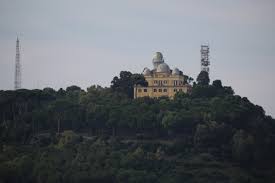 |
| The present-day Rome Observatory is in Villa di Parco Mellini, at the top of Monte Mario |
The Campidoglio Observatory in Rome, where Caterina worked as assistant to her uncle, was located in the eastern tower of the Palazzo Senatorio in Piazza del Campidoglio on the top of Capitoline Hill. The observatory was later acquired by the Italian state and its equipment was transferred to the Villa di Parco Mellini at the top of Monte Mario outside Rome, which is still the location of the Astronomical Observatory of Rome and an Astronomical Museum housing an important collection of historic astronomical instruments.
More reading:
How 18th century scientist Laura Bassi broke new ground for women
Margherita Hack and the popularising of science
Why Giovanni Schiaparelli believed there were canals on Mars
Also on this day:
1907: The birth of writer Alberto Moravia
1913: The birth of film music composer Mario Nascimbene
1977: The birth of World Cup hero Fabio Grosso
Home

